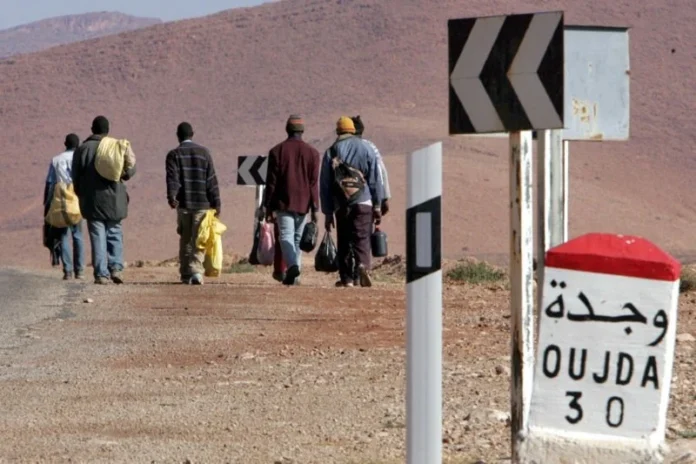The relationship between Morocco and its African depth has always been multifaceted — spiritual, historical, political, and economic. From the Almoravid era to the Sharifian Empire, Morocco played a pivotal role in West Africa, backed by the religious legitimacy of the “Commander of the Faithful” — a status that gave it political and spiritual influence across the continent.
But this connection has never been linear. With Morocco’s strong return to the African Union and a renewed wave of economic and religious cooperation, a new model of relations is emerging amidst global and regional shifts — particularly with the decline of traditional powers and the rise of China and Turkey.
Within this dynamic, serious concerns are arising:
Could this openness mask an external agenda — one that empties Morocco of its elite and youth through emigration, while gradually replacing them with growing numbers of sub-Saharan African migrants settling in major cities and underpopulated regions, under the banner of integration and South-South cooperation?
Reading the Numbers and the Policies
Official reports indicate that over 200,000 Moroccan youth emigrate each year, with over 70% of educated urban youth expressing a desire to leave.
Conversely, unofficial figures estimate between 60,000 and 100,000 sub-Saharan African migrants live in Morocco, temporarily or permanently — mostly in urban centers. Government programs aim to regularize their status, grant residency, jobs, and training.
Morocco — a signatory of the Global Compact for Migration (Marrakech 2018) — now faces political and moral pressure to accept increasing numbers of migrants, backed by EU and UN support.
European countries play a central role, providing major funding:
-
€236 million from the EU Emergency Trust Fund for Africa (EUTF) to support Morocco’s National Migration Strategy.
-
In March 2023, the European Commission pledged an additional €624 million to support sectors including migration, social security, green transition, and administrative reform.
While significant, these funds have sparked internal questions:
Are they truly humanitarian? Or are they tools of soft demographic engineering?
Though framed as social aid, some fear the underlying goal is to gradually reshape Morocco’s population under the guise of “organized migration.”
Security and Social Tensions
A government report revealed 78,685 illegal migration attempts toward Europe were stopped in 2024 — a 4.6% increase from 2023. Yet, international media (e.g., Le Monde, Reuters) accused some Moroccan agencies of using EU funds for forced and inhumane deportations, especially in the desert south, as part of “preemptive deterrence.”
On the local level, cities like Rabat, Salé, Casablanca, and the north have launched integration programs — including housing and training — that sometimes surpass support given to vulnerable Moroccan youth, raising concerns about social justice.
There are also legitimate concerns about certain investment projects that require hiring African migrants as a condition for funding — opening the door to future demographic shifts with political and societal implications.
Where Are We Headed? What Are the Alternatives?
Are we witnessing a state-driven demographic reengineering? Or is Morocco merely yielding to international pressure framed in terms of human rights and legal migration?
And do these policies consider Morocco’s historic identity as a balanced Islamic, Amazigh, Arab, and African nation?
The answer isn’t to self-blame or adopt xenophobic narratives, but to:
-
Establish a clear national population policy that protects Morocco’s demographic balance and sovereignty.
-
Differentiate between regulated, integrative migration and gradual replacement that risks further marginalizing locals.
-
Reaffirm the role of the Commander of the Faithful as a key axis in Morocco-Africa relations — one that remains vertical (spiritual/economic), not horizontal (settlement/replacement).
-
Invest in retaining youth by offering real opportunities in housing, education, and employment — instead of pushing them to emigrate and creating demographic vacuums.
Forward-Looking Proposals
-
Reverse Migration Strategy: Encourage skilled Moroccans to stay or return.
-
Incoming Migration Controls: Align migrant intake with market needs, and ensure proper legal and social integration.
-
National Cohesion Development Plan: Strengthen national and linguistic identity through education, employment, and citizenship.
Conclusion: Between Policy and Public Awareness
The challenge today goes beyond government policy — it’s about elite awareness, civil society mobilization, and serious national media taking charge of this sensitive debate.
Before we wake up to a Morocco with a diluted identity and imported demographics — all under the slogan of “tolerance and diversity” — it’s urgent to act collectively.
Let’s preserve Morocco as it has always been:
A rich blend of history, spirituality, and national identity — rooted deeply in its African, Arab, and Amazigh soul.




